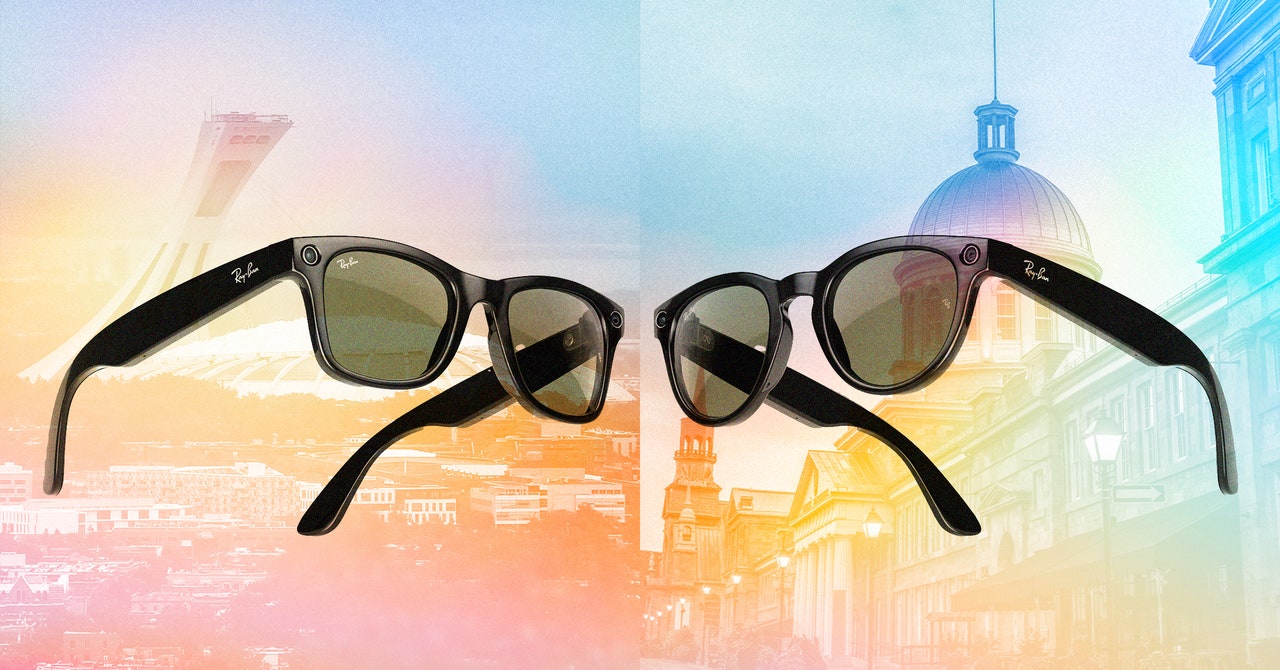
Think about you’ve simply arrived overseas, you don’t communicate the language, and also you bump into a development zone. The air is thick with mud. You’re drained. You continue to stink like airplane. You attempt to ignore the jackhammers to decipher what the indicators say: Do you’ll want to cross the road, or stroll up one other block, or flip round?
I used to be in precisely such a state of affairs this week, however I got here ready. I’d flown to Montreal to spend two days testing the brand new AI translation characteristic on Meta’s Ray-Ban smart sunglasses. Inside 10 minutes of setting out on my first stroll, I ran right into a barrage of complicated orange detour indicators.
The AI translation characteristic is supposed to provide wearers a fast, hands-free strategy to perceive textual content written in overseas languages, so I couldn’t have devised a greater pop quiz on the way it works in actual time.
As an excavator rumbled, I checked out an indication and began asking my sunglasses to inform me what it stated. Earlier than I may end, a harried Quebecois development employee began shouting at me and pointing northwards, and I scurried throughout the road.
{Photograph}: Kate Knibbs
Proper initially of my AI journey, I’d run into the most important limitation of this translation software program—it doesn’t, for the time being, let you know what folks say. It could solely parse the written phrase.
I already knew that the characteristic was writing-only for the time being, in order that was no shock. However quickly, I’d run into its different less-obvious constraints. Over the following 48 hours, I examined the AI translation on a wide range of avenue indicators, enterprise indicators, commercials, historic plaques, non secular literature, youngsters’s books, tourism pamphlets, and menus—with wildly diversified outcomes.
Generally it was competent, like when it instructed me that the guide I picked up for my son, Trois Beaux Bébés, was about three stunning infants. (Appropriate.) It instructed me repeatedly that ouvert meant “open,” which, to be frank, I already knew, however I needed to provide it some layups.
Different instances, my robotic translator was lower than the duty. It instructed me that the signal for the infamous grownup movie show Cinéma L’Amour translated to … “Cinéma L’Amour.” (F for effort—Google Translate not less than modified it to “Cinema Love.”)
Courtesy of Kate Knibbs
At eating places, I struggled to get it to learn me each merchandise on a menu. For instance, as a substitute of telling me the entire completely different burger choices at a brew pub, it merely instructed me that there have been “burgers and sandwiches,” and refused to get extra particular regardless of my wheedling.
Once I went to an Italian spot the following evening, it equally gave me a broad abstract of the choices quite than breaking them down intimately—I used to be instructed there have been “grilled meat skewers,” however not, for instance, that there have been duck confit, lamb, and beef choices, or how a lot they value.
All in all, proper now, the AI translation is extra of a temperamental celebration trick than a genuinely helpful journey instrument for overseas climes.
How It Works (or Doesn’t)
To make use of the AI translation, a glasses-wearer must say the next magic phrases: “Hey Meta, have a look at …” after which ask it to translate what it’s .
The glasses take a snapshot of no matter is in entrance of you, after which let you know concerning the textual content after a couple of seconds of processing. I’d anticipated extra easy translations, but it surely hardly ever spits out word-for-word breakdowns. As an alternative, it paraphrases what it sees or provides a broad abstract.







